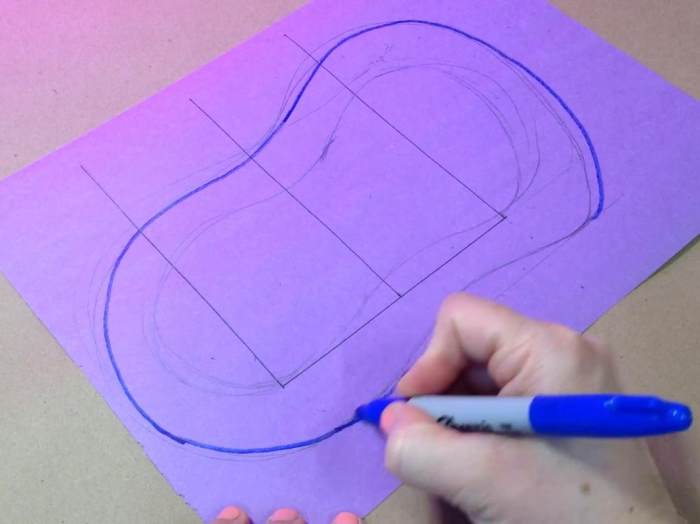DIY Propagation Station: Grow Your Own Plants – Transform your home into a thriving plant haven with a DIY propagation station! This simple and rewarding project allows you to easily multiply your favorite plants, expand your green space, and enjoy the satisfaction of nurturing new life. From basic cuttings to advanced techniques like air layering, the possibilities are endless, offering a fun and fulfilling journey for any plant enthusiast.
With a DIY propagation station, you can take advantage of various propagation methods, such as cuttings, layering, division, and even seeds. This allows you to create new plants from existing ones, reducing costs and expanding your plant collection. You’ll also discover the joy of watching your cuttings develop roots and grow into healthy, thriving plants.
Essential Materials for Building a DIY Propagation Station

A propagation station is a crucial tool for plant enthusiasts who want to multiply their favorite plants. Whether you’re starting from cuttings, seeds, or divisions, a well-designed station can make the process easier and more successful. You’ll need a few essential materials to create your own DIY propagation station, and this section will guide you through them.
Containers for Propagation
Containers are essential for holding the propagation medium and providing a suitable environment for your cuttings or seeds. A wide range of options are available, each with its own advantages and disadvantages.
- Clear Plastic Containers: These are readily available and affordable. They allow you to easily monitor root development and ensure adequate light penetration. However, they can sometimes become too hot, especially in direct sunlight.
- Glass Jars: Glass jars provide a clear view of root growth and are generally more aesthetically pleasing. However, they can be more fragile and prone to breakage.
- Plastic Pots: These are durable and come in various sizes, making them suitable for different propagation needs. However, they may not offer the same level of visibility as clear containers.
- Seed Trays: Seed trays are ideal for propagating multiple cuttings or seeds simultaneously. They typically have individual cells that allow for controlled watering and drainage. However, they can be more expensive than other options.
Propagation Medium
The propagation medium provides support and nutrients for the developing roots. The choice of medium depends on the type of plant being propagated and the desired results.
- Perlite: This lightweight, porous material provides excellent drainage and aeration. It is suitable for cuttings that prefer a dry environment.
- Vermiculite: This mineral is known for its moisture-retention properties, making it ideal for cuttings that require more moisture. It also provides essential nutrients.
- Coco Coir: This natural fiber is a sustainable alternative to peat moss. It offers good drainage and aeration while retaining moisture.
- Peat Moss: This traditional propagation medium is known for its ability to retain moisture and provide nutrients. However, its environmental impact is a concern.
- Seed Starting Mix: This specialized mix is designed for starting seeds. It typically contains a blend of peat moss, vermiculite, and other ingredients that provide essential nutrients and drainage.
Tools and Equipment, Diy propagation station
Having the right tools and equipment can significantly simplify the propagation process.
- Sharp Knife or Scissors: These are essential for making clean cuts on your plant material. A sharp blade helps prevent tearing and damage, promoting faster root development.
- Rooting Hormone: This powder or liquid solution stimulates root growth and increases the success rate of propagation. It’s especially helpful for difficult-to-root plants.
- Watering Can with Fine Rose: A watering can with a fine rose helps ensure even watering and prevent overwatering. This is crucial for maintaining optimal moisture levels in the propagation medium.
- Humidity Dome: A humidity dome creates a humid environment, which is essential for many cuttings to root successfully. It helps prevent dehydration and encourages root development.
- Heat Mat: A heat mat can provide bottom heat to stimulate root growth, especially for plants that prefer warmer temperatures. It can also help speed up the propagation process.
Creating a DIY propagation station is a rewarding experience that opens up a world of plant propagation possibilities. From simple cuttings to advanced techniques, you can enjoy the satisfaction of growing new plants from your existing ones. Whether you’re a seasoned gardener or a beginner, a DIY propagation station is a valuable tool for expanding your green space, experimenting with new plant varieties, and experiencing the joy of nurturing life.
A DIY propagation station is a great way to start new plants from cuttings. You can use recycled materials like jars or bottles, and even get creative with the design. For inspiration, check out pinterest xmas decorations diy for ideas on repurposing materials. You can adapt those ideas to create a unique and functional propagation station that adds a touch of personality to your home.

